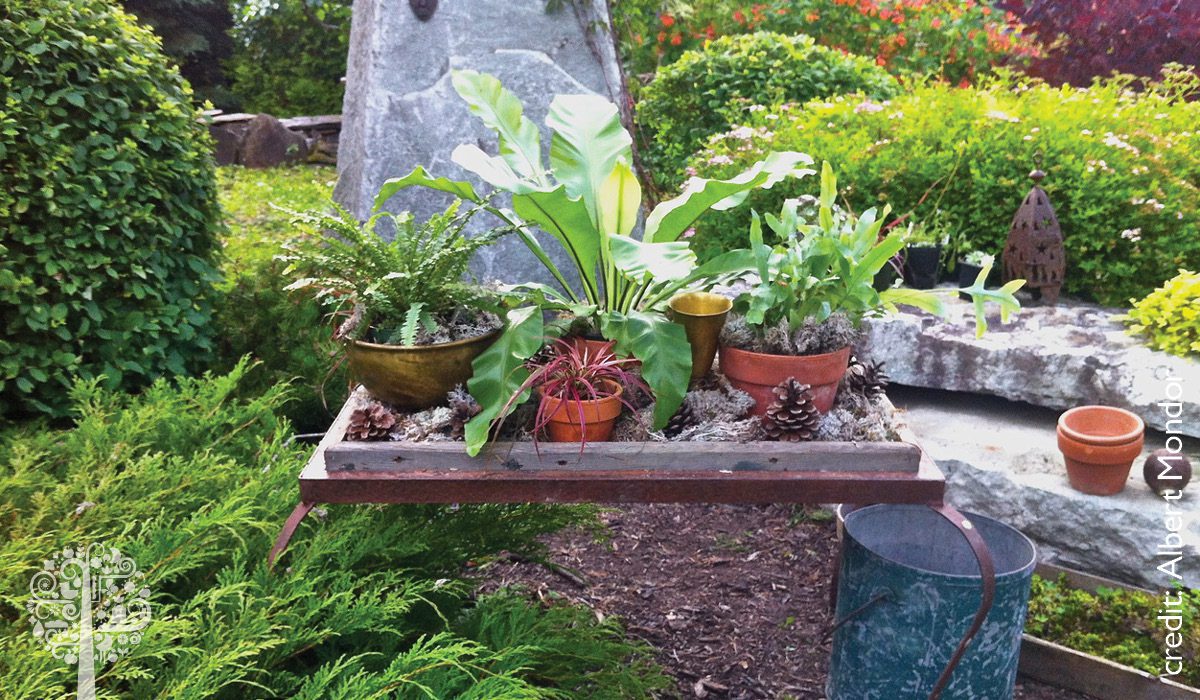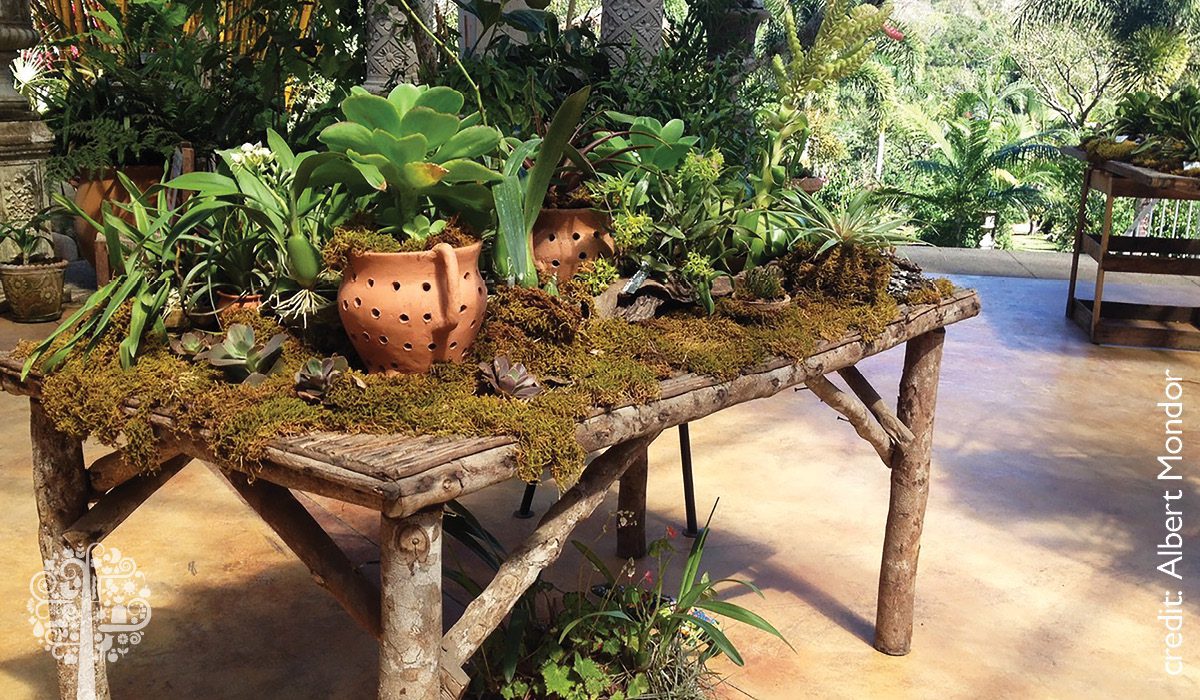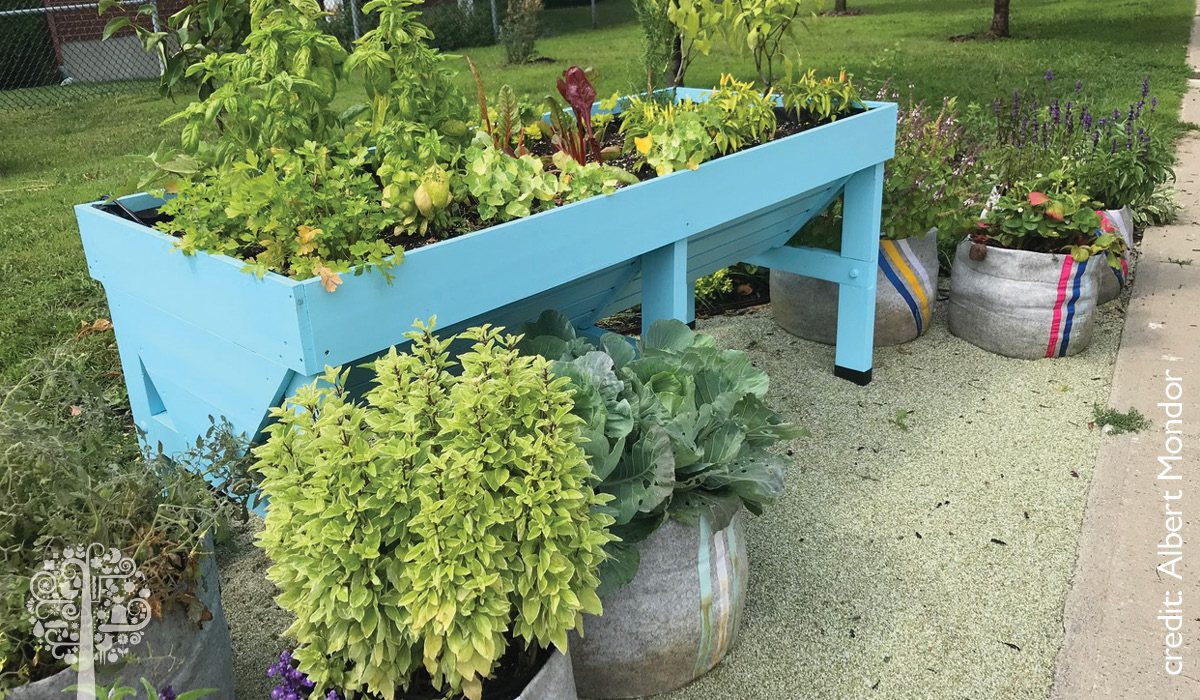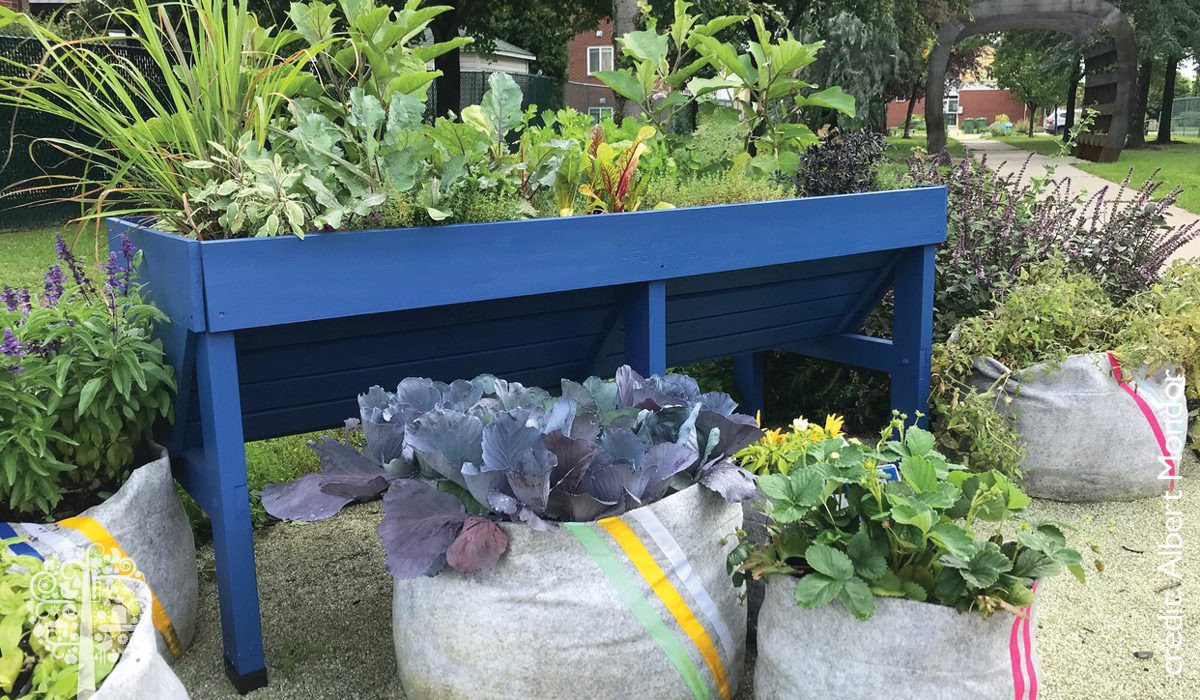In North America, about 85% of people live in urban areas. Since many of them are in condos or apartments without any land access, they have to be creative when growing plants and vegetables. Urban gardeners often have to grow in pots and containers, on walls, roofs and sometimes even on tables!
Table Gardening
A new horticultural trend called table gardening allows the cultivation of plants in urban settings when it is impossible to do so in the ground. Table gardening also allows gardeners with disabilities who use wheelchairs or those who cannot bend or kneel to enjoy the pleasure of gardening and harvesting fresh herbs and vegetables. Table gardening has the virtue of making urban agriculture more accessible to a large number of people.
Beyond the purely practical aspect of table gardening, it is also possible to create a small tabletop arrangement just for its beauty (beauty has a purpose, too). This summer, you can give new life to an old table by transforming it into a garden. Use the table sitting in the garage or the one you found on the street and transform it into a work of art!
When placed near the entrance to your house, a table garden serves as a welcome sign. It can also be a focal point in the corner of your garden. You can use only potted plants and hide the containers with moss or stones, or you can ditch the pots and install ledges on the borders of the table to retain the soil.
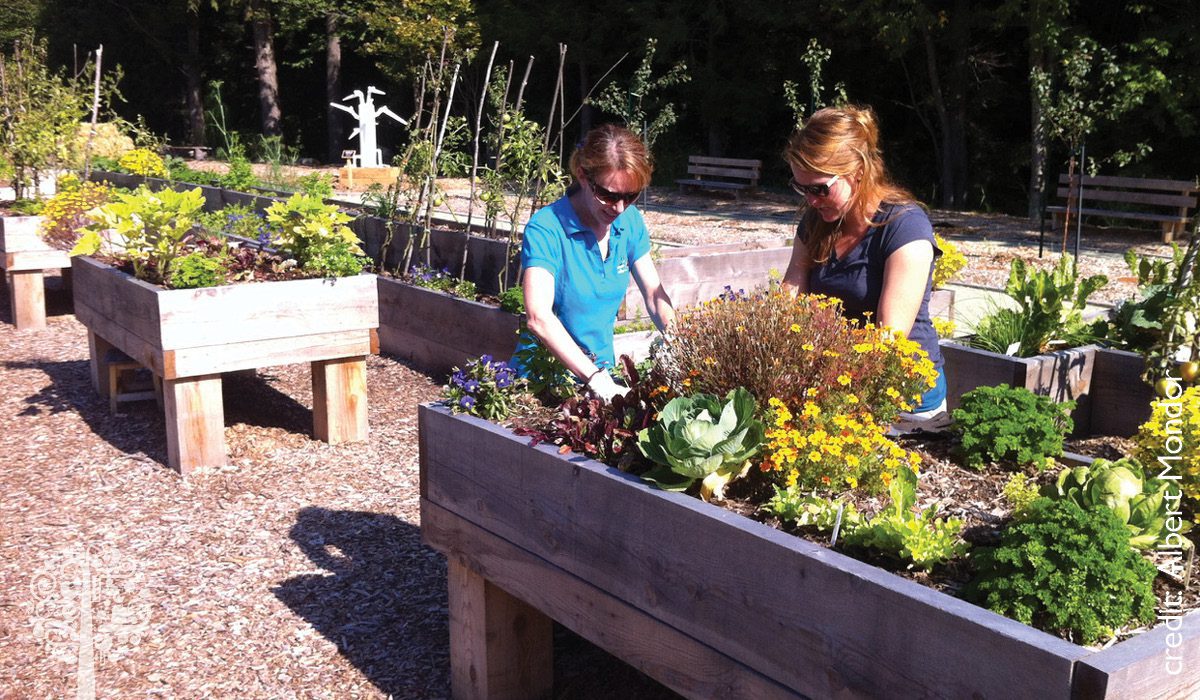
You can plant anything on a table: annuals, long-flowering perennials, aromatic herbs, vegetables, cacti and succulents, tropical plants, or bonsai. The sky’s the limit! Personalize your table garden by incorporating decorative elements such as lanterns, seashells, conifer cones, stones, travel souvenirs, a birdhouse or a bug hotel.
Placement and Design
If you want to harvest an abundance of vegetables, place your table in a sunny location, far from mature trees. Although some edible plants such as Swiss chard, carrot, spinach, mint and parsley tolerate some shade, most veggies require at least six hours of sunlight per day for good growth and high yields.
When building a new gardening table, use a durable, rot-resistant material such as composite wood, stone or steel plates. Tables made of straw bales, woven tree branches, old concrete blocks, or reclaimed steel will undoubtedly give a lot of charm and originality to your vegetable garden while significantly reducing its construction costs.
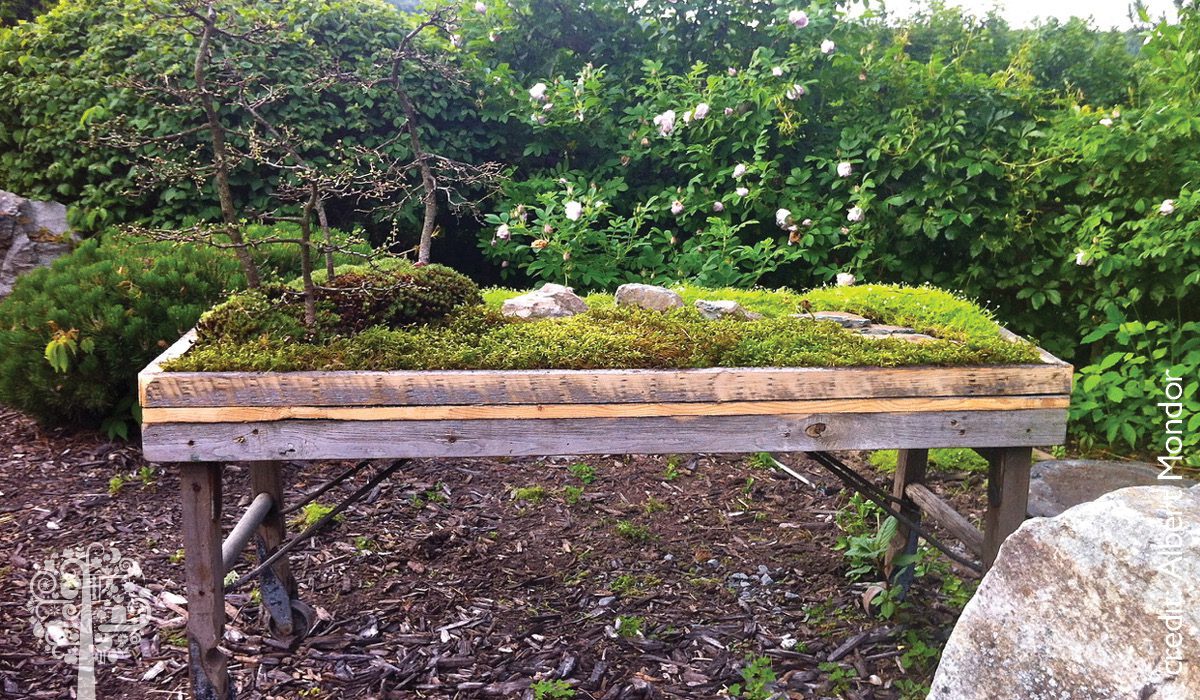
Although wood is very available, inexpensive, and is easy to work with, the fact remains that it rots quickly when in contact with soil. If you still want to use this material to build your table, opt for eastern or western cedar (Thuya). Farmers have long used this species of wood to make fence posts. Be sure to cover the inner part walls and bottom with extruded polystyrene or a thick geotextile membrane.
Torrefied wood is also a good choice since it has a reputation for being rot-resistant. You can even burn the wood surface with a torch. This ancestral Japanese technique called Shou sugi ban prevents the degradation of wood through microorganisms.
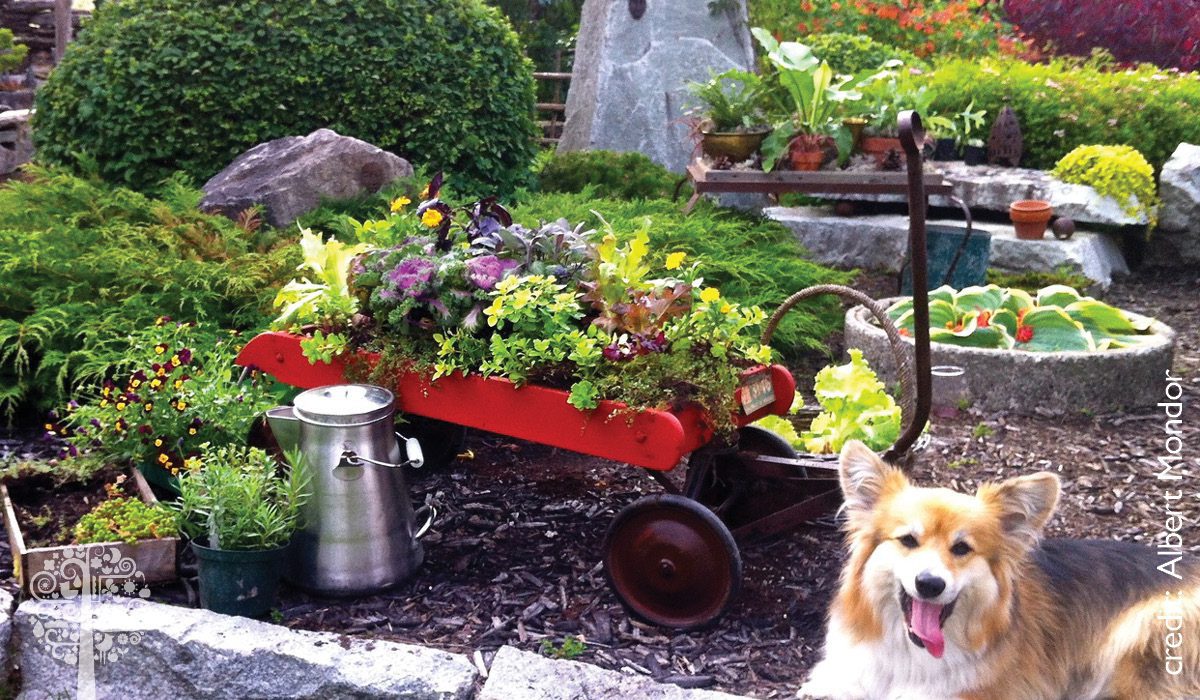
There aren’t any precise rules as to the dimensions that a garden table should have. However, for vegetables to root deeply and have maximum production, you need a table with walls at least 40 to 45 cm (16 to 18 inches) high. As for its width, it should not be more than 90 cm (3 ft). Otherwise, it will be difficult for you to access the table’s center for weeding, watering and harvesting.
Deep, Rich Soil
When you grow plants directly on a table (not in pots placed on a table), it is essential to plant them in a rich, light potting soil with excellent water and nutrient retention capacity. A potting mix made up of equal parts compost, sphagnum peat moss and perlite – such as organic Pro-Mix for vegetable gardens and herbs – gives excellent results.
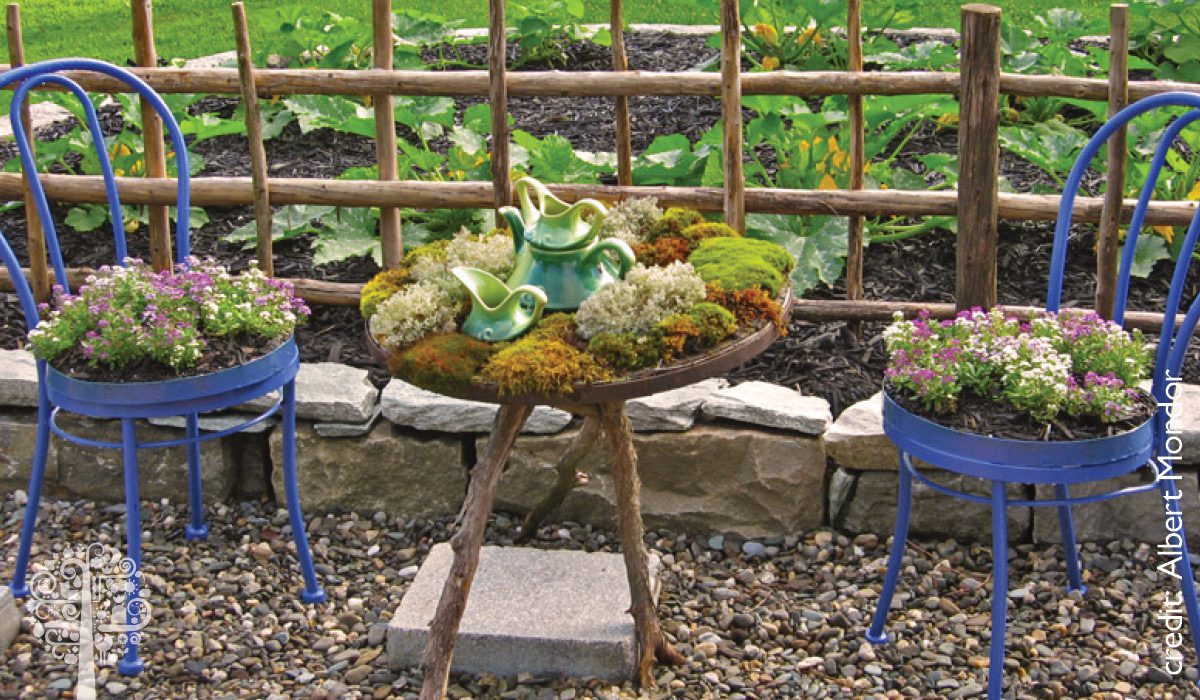
Make sure that you drill a few holes at the bottom of your table to allow the soil to drain. If you are growing vegetables, give your eggplant, cucumber, pepper and tomato plants (about 100 ml per plant) a granular fertilizer rich in nitrogen and potassium – formulation 5-3-8 – when planting them.

